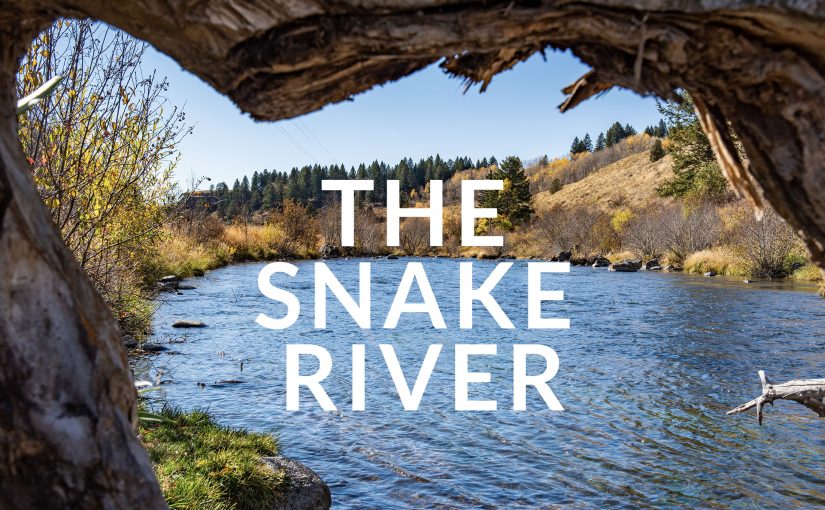Welcome to the untamed beauty of Idaho, where nature’s wonders never cease to amaze. Amongst its majestic landscapes and breathtaking vistas lies a river that has captivated both locals and visitors alike for centuries – the legendary Snake River.
History
The Snake River’s history is as old as the land itself, steeped in a rich tapestry of Native American culture and exploration. For centuries, indigenous tribes like the Shoshone and Nez Perce relied on its bountiful waters for sustenance and transportation, honoring it as an integral part of their way of life.
Its name may have originated from the misinterpretation of a Native American word or from early explorers likening its winding path to that of a snake.
It was not until the early 19th century that European explorers arrived on these shores. Led by none other than famed adventurers Lewis and Clark, they ventured into uncharted territory in search of a mythical water route to the Pacific Ocean – a journey that would forever etch their names into history.
As word spread of this untamed wilderness teeming with natural wonders, fur trappers from both America and Europe flocked to the region. They braved treacherous rapids along the Snake River’s course in pursuit of beaver pelts, forging new pathways through rugged landscapes previously untouched by outsiders.
With time came settlers seeking new beginnings amidst Idaho’s pristine beauty. The Oregon Trail became a gateway for pioneers looking to build a future along the riverbanks. Towns sprang up along its shores – thriving communities shaped by agriculture and commerce fueled by this powerful artery coursing through fertile valleys.
From humble beginnings to an essential lifeline connecting communities across vast distances, the Snake River has witnessed countless chapters unfold throughout history. Its currents have carried dreams and aspirations while reflecting tales of triumphs and hardships alike.
Geography
Stretching over 1,000 miles through the rugged landscapes of Idaho, Oregon, and Washington, the Snake River is a majestic natural wonder that captivates all who encounter it. This iconic river has carved its way through diverse terrains, leaving behind a legacy of breathtaking canyons and waterfalls.
Starting in Yellowstone National Park in Wyoming, the Snake River meanders northward before turning west to flow through Idaho. Along its journey, it passes through deep canyons such as Hells Canyon – one of the deepest gorges in North America. The river also cascades over dramatic falls like Shoshone Falls – often referred to as the “Niagara of the West.”
The geography surrounding this remarkable river is equally impressive. Towering mountain ranges provide a stunning backdrop while vast open plains stretch out on either side. The landscape transitions from lush forests to arid deserts as you follow its course from east to west.
Asides from its awe-inspiring scenery, the Snake River plays a vital role in supporting various ecosystems and wildlife habitats. Its waters sustain diverse species of fish including salmon and steelhead trout – making it an important resource for both commercial and recreational fishing.
In addition to serving as a lifeline for flora and fauna alike, the river also serves practical purposes for humans living along its banks. It provides irrigation for agricultural activities throughout the region and generates hydroelectric power at several dams constructed along its path.
Exploring the geography of this magnificent waterway truly offers something for everyone – whether you seek adventure on thrilling white-water rafting trips or prefer peaceful hikes along scenic trails that wind alongside its shores.
The Snake River Today
Today, it serves as a vital resource for irrigation and hydroelectric power generation. Its waters support a thriving agriculture industry that produces crops such as potatoes, onions, and wheat.
Recreational activities along the river are also popular among locals and tourists alike. Fishing enthusiasts can try their luck at catching trout or steelhead while enjoying the picturesque scenery. Rafting and kayaking opportunities abound for those seeking adventure on the river’s rapids.
In recent years, efforts have been made to preserve the natural beauty of the Snake River ecosystem. Conservation organizations work tirelessly to protect endangered species like Chinook salmon and bull trout that rely on this waterway for survival.
Furthermore, ongoing discussions surround dam management practices to find a balance between energy production needs and environmental concerns. These conversations highlight the complex challenges faced by policymakers in navigating competing interests.
Today’s Snake River remains an integral part of Idaho’s heritage—providing sustenance to communities, supporting diverse recreational pursuits, and prompting important dialogues about conservation and sustainable development. The river continues to shape both the landscape of Idaho and its people’s way of life.
Conclusion
The Snake River, with its rich history, diverse geography, and cultural significance, is a truly remarkable natural wonder.
Today, the river continues to play a vital role in the region’s economy and ecosystem. It provides irrigation for agriculture, supports wildlife habitat, and offers countless recreational opportunities for locals and visitors alike. Whether you’re rafting down its rapids or simply enjoying a peaceful stroll along its banks, the Snake River never fails to captivate.
So next time you find yourself in Idaho or planning a trip to this beautiful state, don’t miss out on experiencing the awe-inspiring beauty and fascinating history of the legendary Snake River. From breathtaking landscapes to thrilling adventures, this mighty river has something for everyone.
